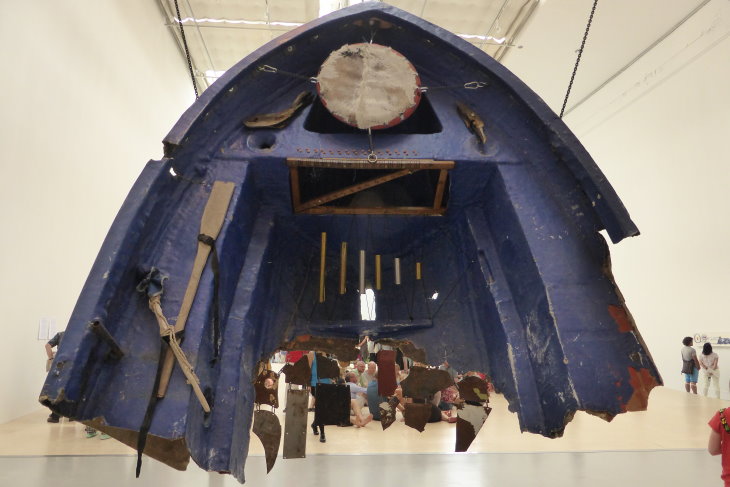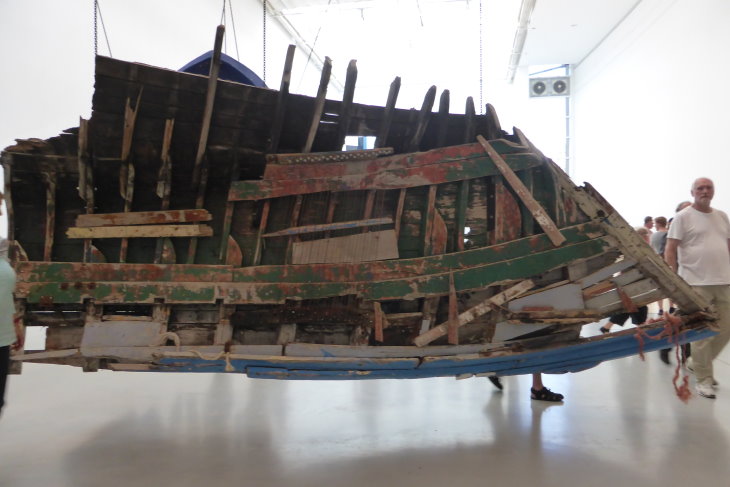Guillermo Galindo from Mexico
with scraps of plastic and wooden boats lost at sea in the attempt to reach Europe, now forming a sound instrument
In 2012 Guillermo Galindo began working on Border Cantos, a collaborative project with Richard Misrach that has taken him along the lengths of the border that divides Mexico and the United States, the most militarized region in North America. It was there that he started collecting discarded things. First small things: a weathered plastic comb, used water bottles, brittle animal bones. And then larger items: twisted pieces of corrugated metal roofing, chains, tires, and finally, a whole series of clothed effigies of migrants that had been strung up in an empty tunnel, left to rot from the heat of the desert sun.

Small and large, the cast-off objects are then transformed into instruments, devices that can sound out into the world. For Galindo, born in 1960 in Mexico City, in these soundings something of the object’s histories and potential futures can be heard. In one sculpture, a glove and a boot suspended from intricate pulleys make an off-kilter “thwack, thwack, thwack” atop a worn rubber-tire drum. In another, the empty shell casings of bullets suspended from a welded metal piñata make a high ring, their brass tops singing out each time that the piñata is struck. These materials—as relics—speak to their past as well as to the imagined lives of the people who once owned them.
In Athens and in Kassel, Galindo is composing new music scores, odes for border crossers. Found materials from both cities will form the basis of new instruments. In Galindo’s hands, a part of a boat might become a string instrument, leftover tubing may now be a flute, a bed from a building in Kassel that provided temporary housing for refugees is potentially a drum.
In Mesoamerica, instruments were understood as talismans for the transit between worlds: “Mesoamerican cultures,” explains Galindo, “believed that our personal objects and the sounds they produce are, in many ways, attached to our journey through this planet.” These new instruments, also talismans, are for another journey: not between worlds but across national lines, and the music they emit brings life to the things left behind. Reliquiae in Latin means “remains,” and these remains are often venerated. Galindo says that, “when designing instruments, my goal is not to obtain the perfect or the most beautiful sound, but to allow the materials to sing in their own voices”—a veneration all its own.
—Candice Hopkins
Posted in Public Exhibition
Excerpted from the documenta 14: Daybook

Guillermo Galindo - Fluchtzieleuropahavarieschallkörper (2017)
Remains of fiberglass and wooden boats, lifebelt and paddle from Lesbos (Greece), goatskin, metal tubes, elastic band, scrap metal, harpsichord strings, piano strings, and metal - documenta Halle, Kassel








